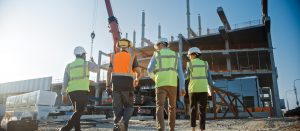Building operations are responsible for 27% of annual global carbon dioxide emissions. That means that the way we use energy within our homes has a very real impact on climate change. The good news is that our energy grid is transitioning away from fossil fuels and towards renewable sources of energy (albeit a little more slowly than we’d like). As that transition takes place, homes that use electric appliances for heating, cooking, water heating, and more (also known as ‘electrified homes’) will power those appliances with renewable energy from the grid, which will reduce their impact on climate change. But many homes in Utah are inefficient and rely on gas appliances. Think of a gas stove, gas furnace, or gas water heater; all of these appliances burn gas in the home and will continue to create carbon dioxide emissions even as our electric grid becomes cleaner and cleaner.
As you can see, home electrification can significantly reduce a home’s CO2 emissions, but there are also a lot of individual benefits to home electrification. Highly energy-efficient electric appliances are available today, meaning that they can lead to lower utility bills and financial savings. Electric homes can also create a healthier indoor environment; since fossil fuel combustion within the home (especially from gas stoves) creates indoor air pollution, home electrification improves indoor air quality and benefits health.
Working with community leaders to develop electrification solutions
Because of all the benefits to home electrification, governments and utilities have adopted “home electrification” strategies (such as programs that promote the use of electric cooktops, electric heat pumps, electric vehicles, etc.). But despite experiencing the greatest impacts of air pollution, climate change, and high energy burdens, underrepresented communities have historically been left out of the design of these programs and policies. Between January 2022 and December 2023, Utah Clean Energy worked to build resiliency among underrepresented communities in the Salt Lake Valley through an EPA Environmental Justice Collaborative Problem-Solving Project (EPA EJCPS project) focused on equitable home electrification. This project focused on engaging underserved community members in the Salt Lake Valley to build a shared understanding of home electrification, identify the unique barriers that underserved communities face, and develop a community vision and strategy for home electrification.
We worked closely with Calvary Baptist Church, Guadalupe School, the International Rescue Committee (IRC), and Westside Coalition (WSC) throughout the project. These organizations are well-known and trusted in Salt Lake’s underserved communities, and they were instrumental in conducting engagement and building strong relationships. Throughout the project, Utah Clean Energy hosted eleven listening sessions and heard from 245 community members. To make sure that our community’s feedback was being heard, we also worked with stakeholders who are instrumental in implementing home electrification programs and policies, including Rocky Mountain Power, the Utah Office of Energy Development, Salt Lake City Sustainability, and more.
Community Strategy for Equitable Home Electrification
After all this community and stakeholder engagement, Utah Clean Energy created the Community Strategy for Equitable Home Electrification. The Community Strategy discusses the top barriers and challenges to home electrification that were discussed among community members and identifies four solutions to address them that were co-developed with community members and other key stakeholders. Those solutions include: launching the Home Energy Rebate Programs in a way that responds to community needs; launching a public education campaign about home energy upgrades and programs that can make home electrification easier; creating a home assessment program that is responsive to community needs; and recruiting and training contractors to install electric appliances in low- to moderate-income homes. You can read the full Community Strategy in English here and in Spanish here.
Utah Clean Energy has already begun to implement these four solutions and others that were discussed throughout the project. For instance, we are meeting regularly with the Utah Office of Energy Development as they design Utah’s Home Energy Rebate Program to ensure it meets the needs of underserved communities. We also submitted comments based on community feedback to encourage Rocky Mountain Power’s Wattsmart program to adopt marketing strategies that would work for underserved communities. We look forward to continuing to work with communities and other stakeholders to implement these solutions and amplify the voices of underserved communities.






